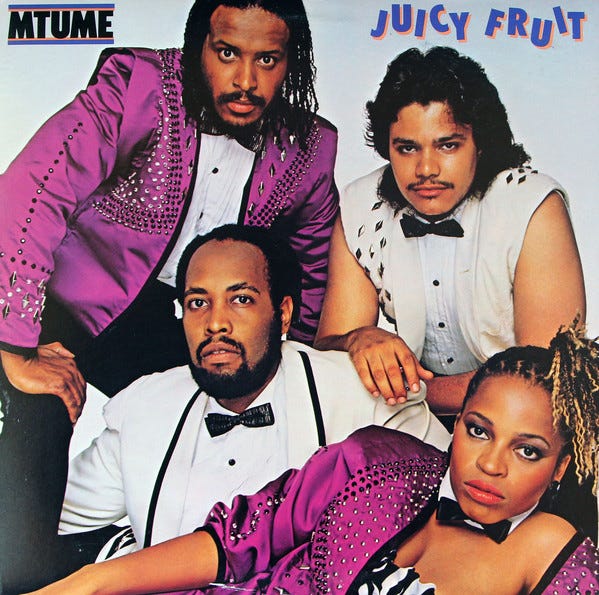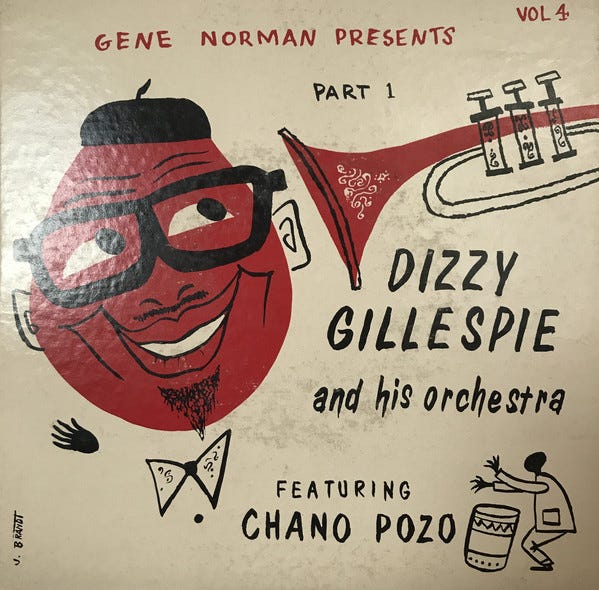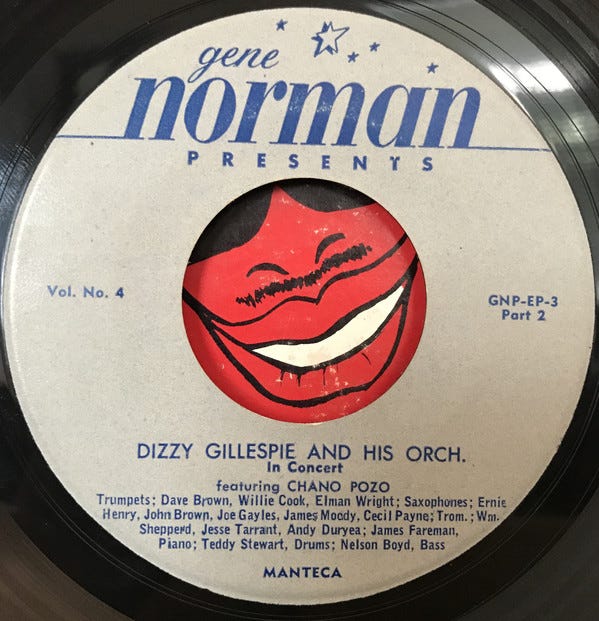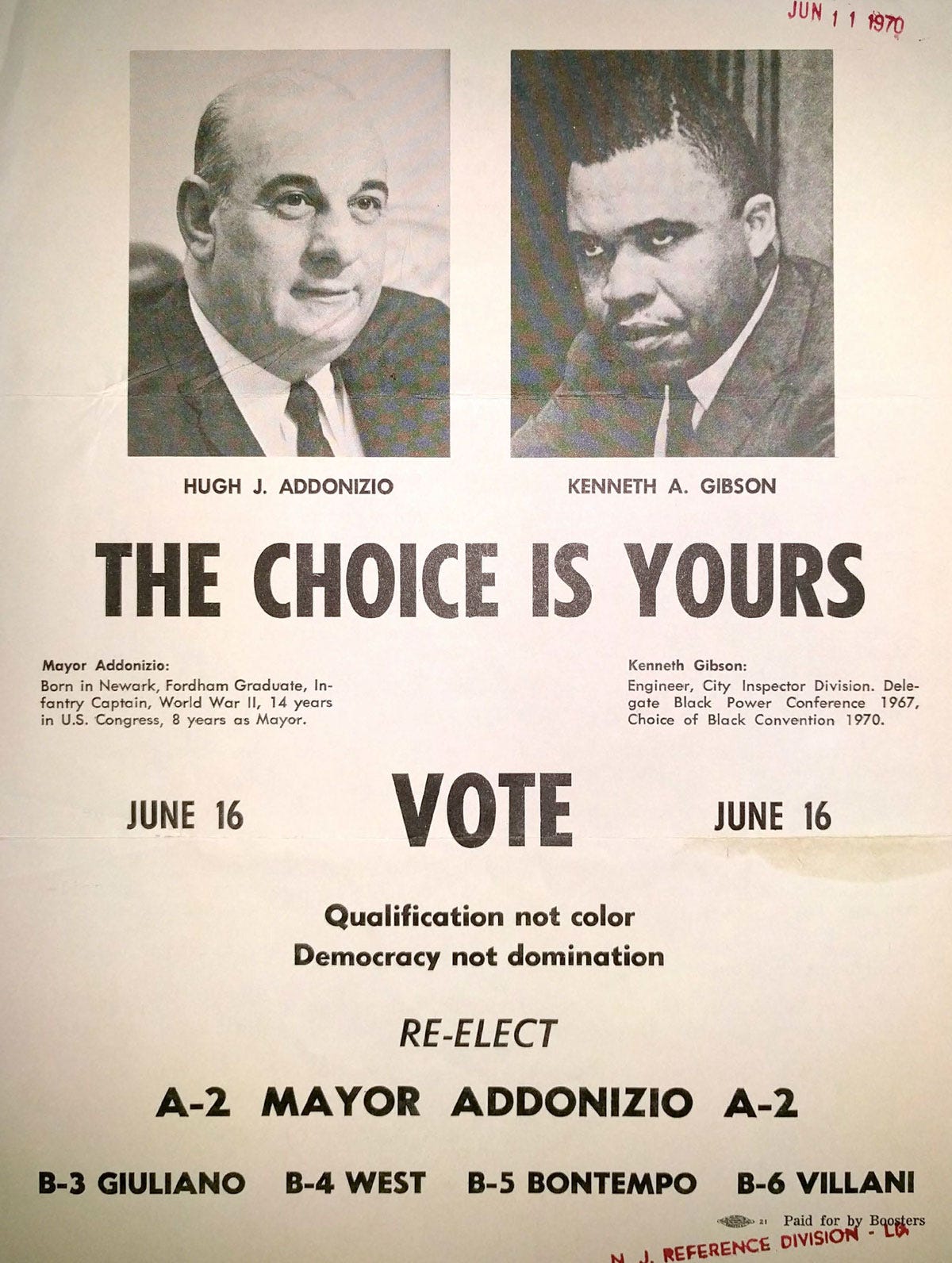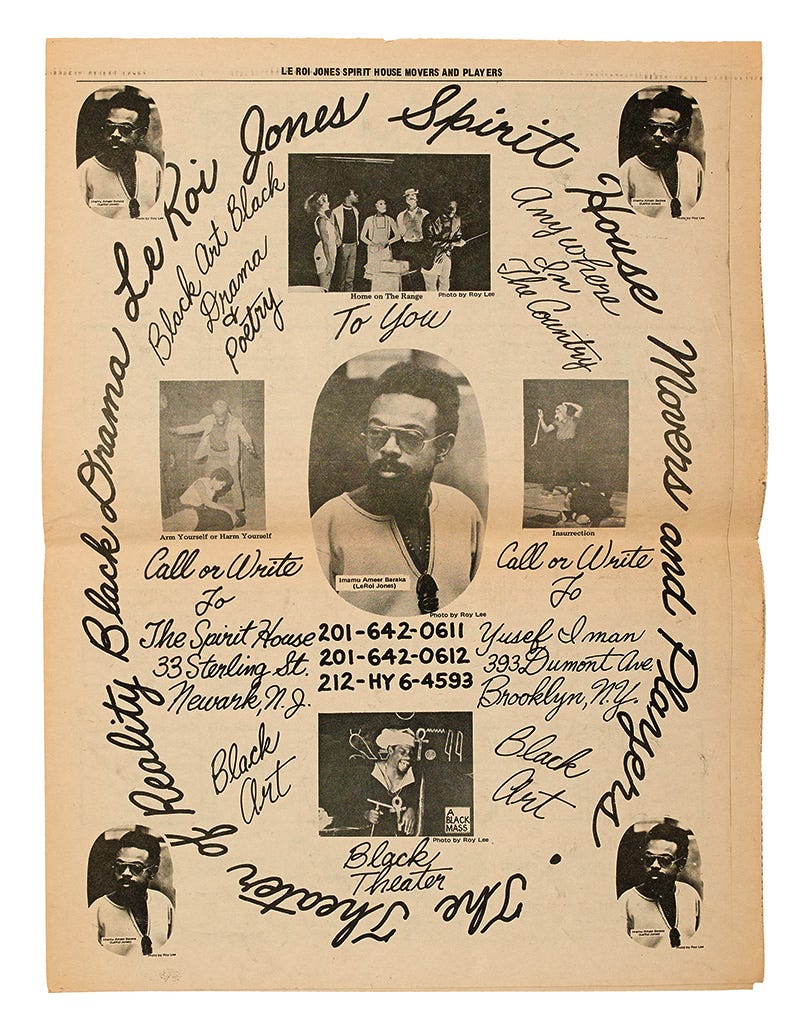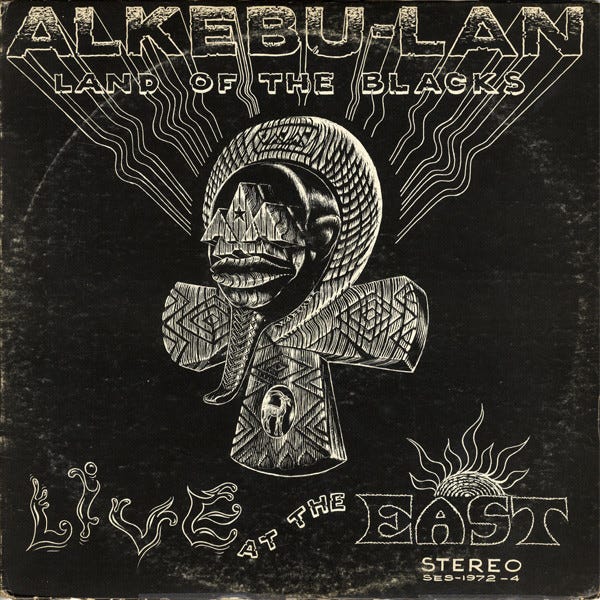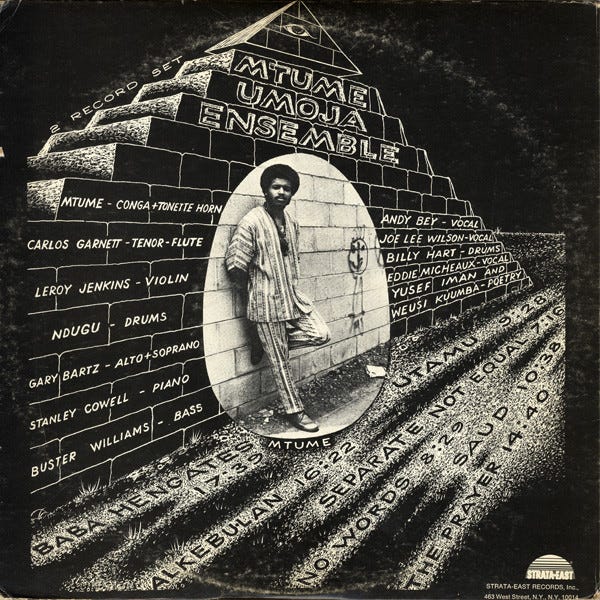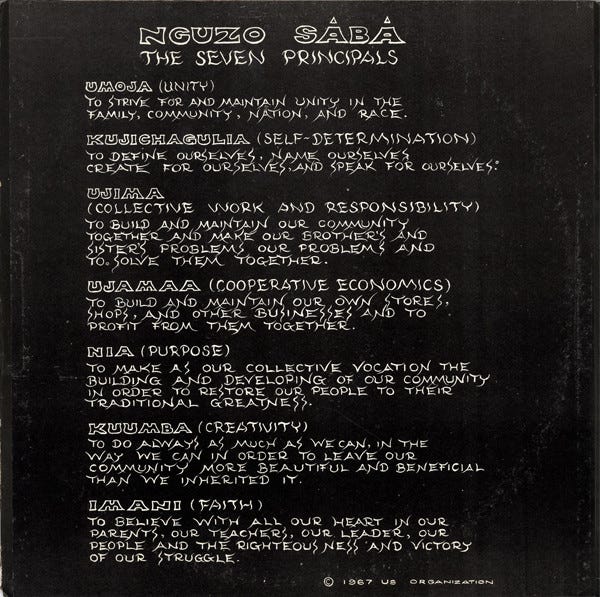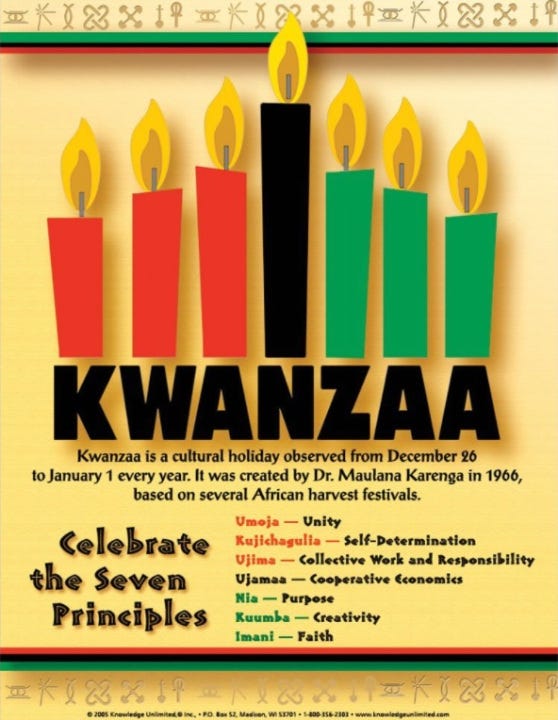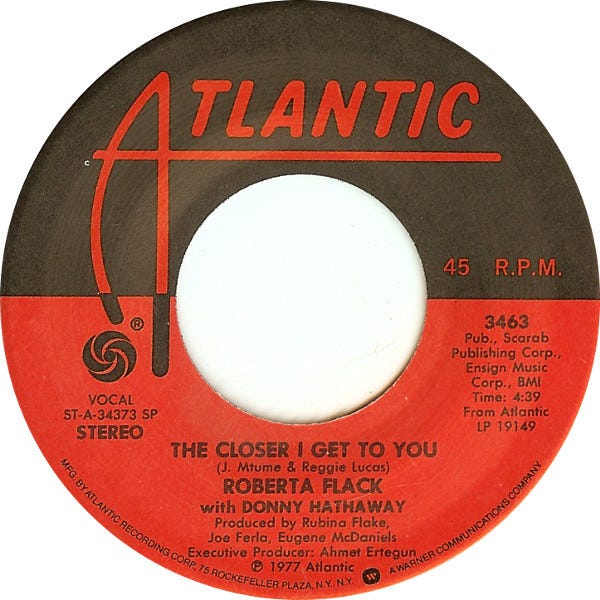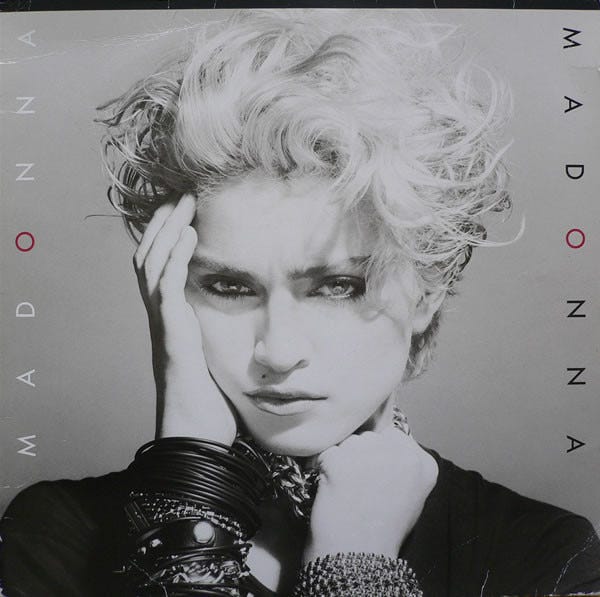In 1983, on the weekends, my college buddy, Fitz, and I would drive down to New York City - we both had girlfriends in midtown. One Saturday night, while cruising down the Palisades Parkway, we heard Mtume’s Juicy Fruit on the radio for the first time. We both looked at each other and turned it way up…. That song became a huge hit in the City.
That was also the first time I had ever heard of Mtume. Many years later, in a very unlikely place, I would run into him again. This time it was on Strata-East label’s Alkebu-Lan - Land of the Blacks, recorded in August 1971 at The East in Brooklyn. Mtume journeyed a very long way from that 1971 album to Juicy Fruit in 1983.
James Forman, later to take the name Mtume, was the son of famous saxophone player Jimmy Heath; however, he was raised in Philly by Bertha and James Forman. James “Hen Gates” Forman was a renowned Philadelphia jazz pianist, who played in the Dizzy Gillespie band for many years. Here’s an album he played on:
Note on the label he is listed as “James Fareman”.
I picked up this 45 RPM at Big Al’s record store in San Jose in the early 1990s. I’ve since framed it and now it hangs on the wall next to the Let’s Get Lost movie poster I bought for $100 off the ticket-taker at the Castro Theater in San Francisco - he looked at me for a minute, turned around quickly, took it down, and handed it to me. I had to run back to the car to stash it before the movie started….
Interestingly, James’ mom and dad did not encourage him to become a jazz musician and sent him to swimming school, where he achieved the title of first black Middle Atlantic AAU champion in the backstroke. In 1966, he entered Pasadena City College in LA on a swimming scholarship, where his coach trained him for the 1968 Olympics. However, during his student years, he gave up swimming and joined Maulana Karenga’s US organization.
In Los Angeles in 1966, Karenga formed the organization to promote his cultural nationalist theory and movement called Kawaida (Swahili for "tradition" or "reason"), a synthesis of nationalist, pan-Africanist, and socialist ideologies. It was created and defined during the height of black pride and self-awareness characterized by the Black Power movement.
Also in 1966, Karenga created Kwanzaa, the first pan-African holiday. He said his goal was to "give Blacks an alternative to the existing holiday and give Blacks an opportunity to celebrate themselves and their history, rather than simply imitate the practice of the dominant society.” The rituals of Kwanzaa promote African traditions and Nguzo Saba, the "seven principles of African Heritage" that Karenga described as “a communitarian African philosophy". As an advocate for the organization, James embraced an original African cultural lifestyle, even down to his name— “Mtume”—Swahili for “messenger”.
In 1969, playing conga, Mtume made his professional debut on Kawaida, recorded on the obscure O’Be label. He was joined on the album by his biological father Jimmy Heath, Herbie Hancock, Don Cherry, Buster Williams, Eddie Blackwell, and Albert Heath. The concept for the album was to spread the teachings of Karenga's Kawaida philosophy. Mtume wrote four of the five tunes and Albert Heath contributed the other one. Here’s my favorite from the album:
As part of the US organization, Mtume would hang out at Hollywood’s Shelly’s Manne-Hole, West Coast drummer Shelly Manne's renowned jazz venue, spreading the message of Kawaida to musicians.
However, in 1969, to join poet and activist LeRoi Jones and the Committee for Unified Newark’s effort to elect Ken Gibson as the first black mayor of Newark, Mtume left the US organization and moved to New Jersey.
He soon joined Jones’ Spirit House, a cultural organization in Newark’s Central Ward. LeRoi Jones' Spirit House Movers and Players was an important part of the evolution of the Black Arts Movement (watch this video of Jones talking about the importance of art and the Black Arts Movement). Here’s a Spirit House program from 1967:
The LeRoi Jones Young Spirit House Movers and Players appeared on a 1968 TV show called “Inside Bedford-Stuyvesant” to perform this incredible spoken word piece on race relations:
This video helps us understand the backdrop for the music surrounding the Black Arts Movement. It’s a window into another time that still resonates for some today. In this tumultuous environment, Mtume recorded his first album as leader of the Mtume Umoja Ensemble.
Recorded live in August 1971 at The East in Brooklyn for the Strata-East label, Alkebu-Lan - Land of the Blacks is Mtume’s debut as a leader. If labels matter, with its mixture of political monologue, Afro-Spiritual, and Free-Jazz improvisation, I think the album is hard to categorize. It remains a landmark underground jazz album.
To get a feel for the album, here’s Baba Hengates - note the nod to his father, “Hen Gates” Forman.
This is on the inside of the album’s gatefold…
and is a direct restatement of Karenga’s seven principles of Kwanzaa.
Soon after this album, when Miles Davis invited him to join his band, Mtume was ready to hit the big time.
In 1971, Mtume joined Miles Davis's band, recording on Davis’ On The Corner. He would stay with Davis until 1975. The song, Mtume, appeared on Davis’ 1975 Columbia album Get Up with it:
You can clearly hear his African percussion influence in Davis’ sound from that time. Also making his debut with the Davis band on On The Corner is guitarist Reggie Lucas, shown on the left here with Mtume.
A native of Queens, New York, Lucas appeared on many of Davis’ live album recordings. While on the road with Miles Davis's band, Mtume and Lucas roomed together. During that time, they talked a lot about writing songs. Mtume says, “Reggie was much more ahead of me in terms of R&B. I was writing jazz primarily. I’d done three jazz albums. In making that transition, Reggie was very helpful to me.” After their stint with Davis, Mtume, and Lucas formed a musical partnership and together they wrote hits like Roberta Flack and Donny Hathaway's The Closer I Get to You…
Stephanie Mills’ Never Knew Love Like This Before, which won them a Grammy for Best R&B song in 1981, and Phyllis Hyman’s You Know How To Love Me.
Interestingly, Lucas also produced the bulk of Madonna’s 1983 self-titled debut album, which included the chart-topping hits Borderline and Lucky Star.
Mtume’s musical contribution to the last half century is remarkable; however, what I find most remarkable was his ability to change and expand his music. He says, “I started as a hand drummer and keyboard player. Later I started writing. I started producing. Then, I put my own band together and then I started scoring for films (Native Son) and television (New York Undercover). That’s a lot. I’ve been doing this 50 years. Most people don’t evolve like that.”
Mtume has bridged the gap between old-school music and the roots of today’s new music - that is perhaps his greatest legacy. Here’s one more for the road, Mtume’s Juicy Fruit provided perhaps one of the crown jewels of Hip-Hop’s sampling era, Juicy by the Notorious B.I.G.
Next week, we’ll follow the music of one of the second-generation New Thing players, alto saxophonist Marion Brown, as we continue to paddle down that Big River Called Jazz.…
If you like what you’ve been reading and hearing so far on our journey and would like to share this with someone you think might be interested in learning more about our great American art form: Jazz, just hit the “Share” button at the bottom of the page. Also, if you feel so inclined, become a subscriber to my journey by hitting the “Subscribe” button here:
Also, find my playlist on Spotify: From Fred Astaire to Sun Ra.
Feel free to contact me at any time to talk shop. I welcome and encourage that….
Until then, keep on walking….


